CfE 44 - World Cinemas of Resistance: Cinematic worlds as decolonial practices
Call for Essays for the thematic section of Cinéma & Cie no. 44, edited by Daniele Rugo and Marco Benoît Carbone.
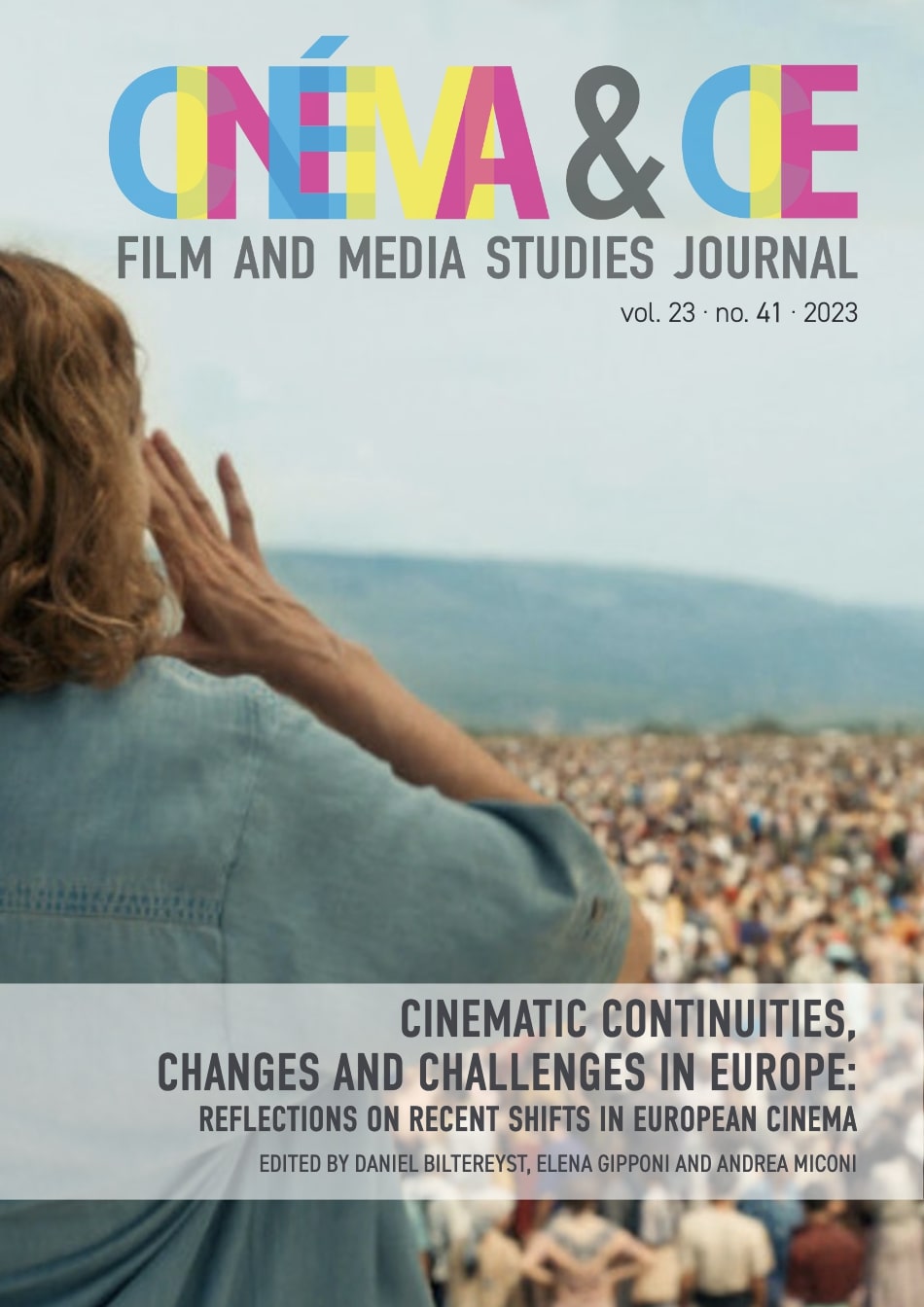
Edited by Daniel Biltereyst, Elena Gipponi and Andrea Miconi
This theme issue is a result of research done in the context of the Horizon 2020 project “European Media Platforms: Assessing Positive and Negative Externalities for European Culture-EUMEPLAT”, funded by the European Commission in Grant Agreement Number 101004488. It deals with some main research questions: how has the US filmed entertainment industry succeeded in expanding its hegemony? Are US streamers, such as Netflix, now setting the standard, and what are the consequences for European cinema? Is it beneficial to respond to, or challenge, this hegemony? Should we not strive to overcome the antagonism between Hollywood and Europe, and acknowledge European cinema’s marginalized position while fully recognizing the richness of its hybrid and hyphenated identities? Other related questions in this issues deal with how European filmmakers and cultural institutions envision new realities and redefine socio-economic and cultural boundaries within and beyond Europe? What narratives does European cinema construct about the old continent, about inclusion and diversity, or about issues such as poverty, precarity, migration, and other pressing concerns? How do films navigate across borders? What is the role of language, and should European filmmakers consider moving away from Europe’s multilingualism to embrace English, the cinematic lingua franca? Are European co-productions viable strategies for overcoming cultural, linguistic, and other obstacles?

Edited by Anna Caterina Dalmasso, Wanda Strauven, and Simone Venturini
Even though it is often presented as an unprecedented technology, virtual reality is a new medium as much as it is an old one, and an imaginary one. Virtual technologies have been long foreshadowed by intermedia fictional worlds, anticipated by the virtualisation of visuality that took shape during Modernity, and even prefigured by the multifarious attempts to realise the immersion of the spectator, which can be traced back to the most ancient forms of human art and image-making techniques. In order to understand this changing mediascape, the role of a media-archaeological approach to the virtual lies not only in restoring lines of continuity with the past, but in providing different frameworks to critically interrogate the process of virtualisation of the environment, which exceeds the state of present-day media technologies. In this perspective, the issue aims to investigate the material and corporeal conditions, catalysing multisensory spectatorship and the concretisation of immersive media, as much as the epistemic and imaginary constructs which support and underpin them.

Edited by Silvia Casini, Alice Cati and Deborah Toschi
For a long time, scholars in the Humanities have been trying to move towards a boundary space that touches upon the medical and scientific disciplines. More than others, the topic of representation/visualisation, the relationship between ways of seeing, images, and the techniques to create them has emerged as a fertile and valuable ground for dialogue. This special issue of Cinema & Cie sets itself the ambitious goal of opening an interdisciplinary discussion reflecting on the images of illness, wound, pain, scar, and cure, which are shared today more than ever and go beyond the narrow medical field. In order to develop a new interdisciplinary methodology suitable for capturing the emotions, material dimensions, bodily practices, performative dynamics, and intersubjective systems that, as a whole, consolidate the mise en discourse of the body as an object of care, we have called upon the traditions of Trauma Studies, Medical Humanities and Visual Culture of science and medicine. In this perspective, images are not only the starting point for understanding knowledge production processes but also a valuable restorative tool for care and therapeutic practices.

Edited by Adriano D’Aloia and Ian Verstegen
Recent advancements in the encounter between media studies and the cognitive sciences raises the possibility of re-launching some of the assumptions of Gestalt psychology as productive insights for film theory, analysis, and criticism. ‘Gestalt Filmology’ would be a body of knowledge taking hints from Rudolf Arnheim’s pioneering film theory but anchored in core Gestalt ideas about the multimodal functioning of the senses, motion and ego-perception and resulting filmic expressiveness and symbolism. Elaborated in this way, a Gestalt Filmology might be able to offer suggestions and correctives to an ‘embodied cognition’ and ‘neurofilmological’ approach in visual media studies. This special issue of Cinéma & Cie connects together elements of Arnheim’s thought from different periods of his career. It bolsters Arnheimian ideas with research strains from general gestalt-theoretical psychology, and it brings elements of those same Gestalt-theoretical traditions to parts of film theory that Arnheim never touched.
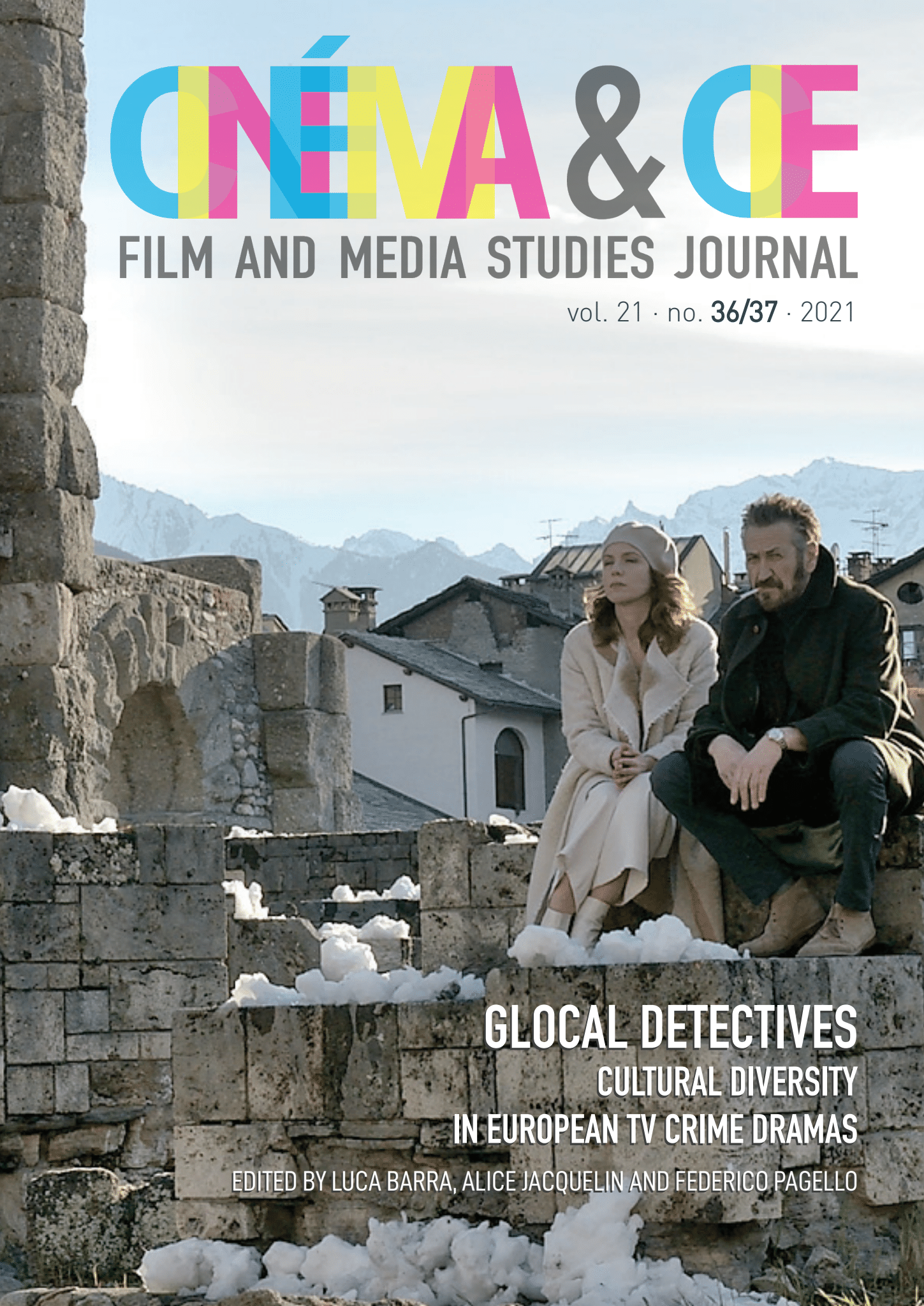
Edited by Luca Barra, Alice Jacquelin and Federico Pagello
TV screens across Europe are more and more filled with detectives, investigators, police(wo)men coming from abroad. After a long-lasting prominence of US figures, the last decades have offered an increasing visibility to characters coming from the UK, the Nordic regions of Scandinavia, the major continental markets as France, Germany, Spain and Italy, the Mediterranean regions, the Eastern and Central European countries, and so on. European crime narratives are complex objects: national, and global, and often glocal. Their popularity and circulation in European markets brings cultural diversity and puts audiences in touch with other not-so-far yet distinct cultures, while also – sometimes – laying ground for the development of a truly transnational, cross-European, shared popular culture. The special issue of Cinéma & Cie presents some results of the research carried out by Horizon 2020 project DETECt – Detecting Transcultural Identity in Contemporary Popular Crime Narratives, and includes a wide range of case histories, theoretical approaches, methodological frameworks.

Edited by Ada Ackerman, Barbara Grespi and Andrea Pinotti
Digital culture, taken etymologically, means a culture of the fingers (from the Latin digitus). Although our contemporary times are still envisioned through the lens of an over-reigning visual paradigm, our media practice has become mainly bodily, since the role of hands has proven ever more decisive and gestures have increasingly been constructed as tools for thinking and conceptualization. This issue presents crucial case studies in film and visual culture, ranging from classic to experimental cinema, from science visualization to esoteric culture. In every field, filmed hands come to be extraordinary operators of visibility: they depict imaginary worlds which do not rely upon eye perception, they make visible the intimacy of the human being, they give shape to the spectator’s gaze and, in a more concrete fashion, to the image itself through gestures of care and restoration of the filmstrip as well as by anchoring vision through data visualization processes. A hypnotic and a powerful motif, hands represent the corporeal grounds of the cinematic medium and the indelible crystallization of the human in technique.

Edited by Sarah Keller, Elena Marcheschi and Giulia Simi
Experimental cinema, as well as experimental video practices, have always been art forms widely explored by women. Yet, while the field of cinema studies has devoted research — although only recently — to women involved in narrative and commercial films, as directors, actresses, screenwriters and in other roles of cinema industry, the history of women’s experimental audio-visual production is still little explored and would benefit from being retraced and framed in a wider historical and theoretical perspective. This special issue of Cinéma&Cie is therefore aimed at tracing women’s experimental practices at the intersection of cinema and the arts by intertwining a theoretical and historical approach through the analysis of cases studies from the mid-century up to the present time.

Edited by Simone Dotto, François Mouillot and Maria Teresa Soldani
This special issue of Cinéma&Cie aims at pushing the discussion on the relationships between avant-garde arts and popular culture far beyond traditional scholarship on the topic, stressing the concept of cultural history more than the specificity of film, media and music histories. By adopting a global perspective, the authors will elaborate useful analytical and. theoretical tools to re-assess the “avantpop connection” as a dynamics of two-way exchanges across several artistic and media domains and different geographical and historical contexts.
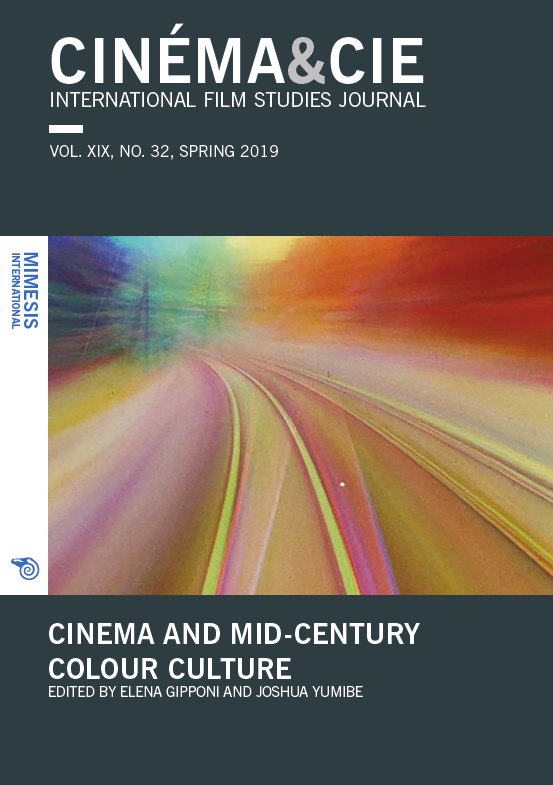
Edited by Elena Gipponi and Joshua Yumibe
Suspended between transparency and naturalness on the one hand, and opacity and artificiality on the other, colour is integral to the cinematic apparatus in an ideological as well as technological sense. This special issue of Cinéma&Cie aims to address colour in the middle decades of the twentieth century — from the 1930s to the 1960s — examining it as an analogue and material quality of still and moving images and, more broadly, of the intermedial cultures in which cinema was embedded. During the mid-century, colour gradually became the norm, and film and media from the era track this transition formally as well as culturally, showing a constant tension within colour between the display of its technical wizardry and its concealment, and between attempts to control it and its own autonomous resistance to regulation.

Edited by Alessandro Bratus, Massimo Locatelli and Miguel Mera
Pop music meets the media… This issue is dedicated to a social and cultural phenomenon that we could call the ‘mediatization of pop music’. With a particular focus on the 1960s and 1970s, it is our contention that these two decades significantly shaped our current mediatized culture both in its form and content. Since then, instead of political or confessional organisations, it was popular media and music that offered the contact point between public and private spheres, between the personal and the political, and this shift should be reconsidered as a focal trope in modern culture. We hope to widen the notion of mediatization by highlighting a range of historical processes that have had phenomenological after-effects: the experiential prototypes that were developed during this pivotal period later became persistent paradigms, and paved the way for the mediatized world we still live in.

Edited by Marco Dalla Gassa, Corrado Neri and Federico Zecca
This special issue of Cinéma&Cie explores the cultural dynamics, ideological aporias and political struggles that characterize the relationship between Maoism and national cinemas, from the immediate aftermath of the Cultural Revolution to the present day. All the articles included in the special issue highlight the complexity of the process of translation and ‘reinvention’ of Maoism in different cultural contexts, focusing on subjects and historical episodes that have been suppressed in public debates and in traditional film history books.

Edited by Stefano Baschiera, Francesco Di Chiara and Valentina Re
This special issue of Cinéma&Cie analyses the logic and processes of re-intermediation emerging in the contemporary European media industry landscape, providing an opportunity to bring questions of availability, text circulation and gatekeeping to the centre of scholarly debates and investigations. Through contributions showcasing a wide array of methodological and theoretical approaches, the volume illustrates and analyses the presence of new gatekeepers, their impact in shaping texts and their consumption in different European contexts. Its case studies include file sharing, Curzon Home Cinema, VOD services and the problematic implementation of the Digital Single Market policy.

Edited by Ilaria A. De Pascalis, Judith Keilbach and Maria Francesca Piredda
Who is the Subaltern in the current global frame? Has neoliberalism changed the experience of subalternity? How do subalterns write history and what kind of history is written about subalternity? Cinéma&Cie’s special issue addresses these and other questions through various theoretical approaches. The essays argue for the importance of a multidisciplinary perspective and address issues of media representation from a variety of perspectives, such as visual culture, history, philosophy, and postcolonialism. They focus on contemporary subalternity, and especially on the migrant – characterized by diaspora and condemned to invisibility by hegemonic power – and the postcolonial subaltern – who has now the possibility to express her/ himself in unexpected ways, in particular by using new media. The scattering and pervasiveness of media devices and gazes is discussed in depth in these essays, which delve into the dialectic between subaltern cultures and agency embodied in the subjects of representation.

Edited by Miriam De Rosa and Vinzenz Hediger
If we live in a post-media and post-cinema condition, how much longer will it last, and how will it end? Picking up on the recent debate about post-media and post-cinema, this special issue of Cinéma & Cie addresses the question of temporality and periodization in media history and asks what exactly the ‘post’ in post-cinema means. The contributions approach this question from a variety of perspectives and discuss a number of key issues, from the question of medium ontology to that of medium specificity, from the development of digital and hybrid cinematic forms to the problems and pitfalls of preservation. Exploring new analytical and theoretical frameworks that account for the moving image in the multiplicity of its configurations, the contributions open up new avenues of research and provide a sense of what may lie beyond our current post-medium and post-cinema condition.
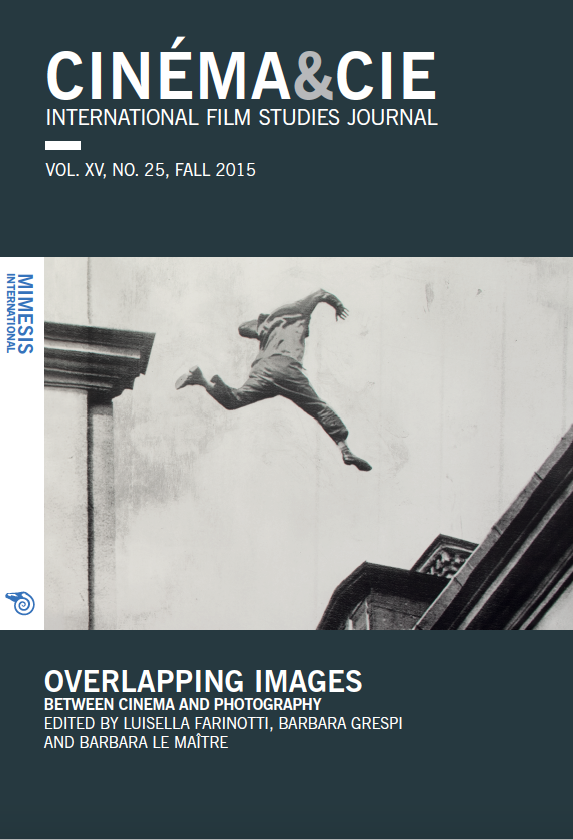
Edited by Luisella Farinotti, Barbara Grespi and Barbara Le Maître
For a long time, comparisons of cinema and photography have been predominantly a question of contrast, both of their forms and their ways of seeing. This special issue of Cinéma&Cie reverses the perspective, by addressing some of the fundamental spaces of convergence and coexistence between the two languages. While they have always been somewhat present in the history of the two arts (not only in chronophotography, but also astronomic photography, photographic series, and still photography), the photocinematic forms have become particularly relevant in the archaeology of post-media culture that has characterised much scholarship lately. What tools should we employ to study these confluences today? Is it possible to perceive overlapping images also in strictly cinematic or photographic works? From this perspective, the special issue deals with borderline authors, such as Jeff Wall; post-filmic aesthetics, such as the cinematic tableau vivant and innovative examples of contemporary, experimental audiovisual production.
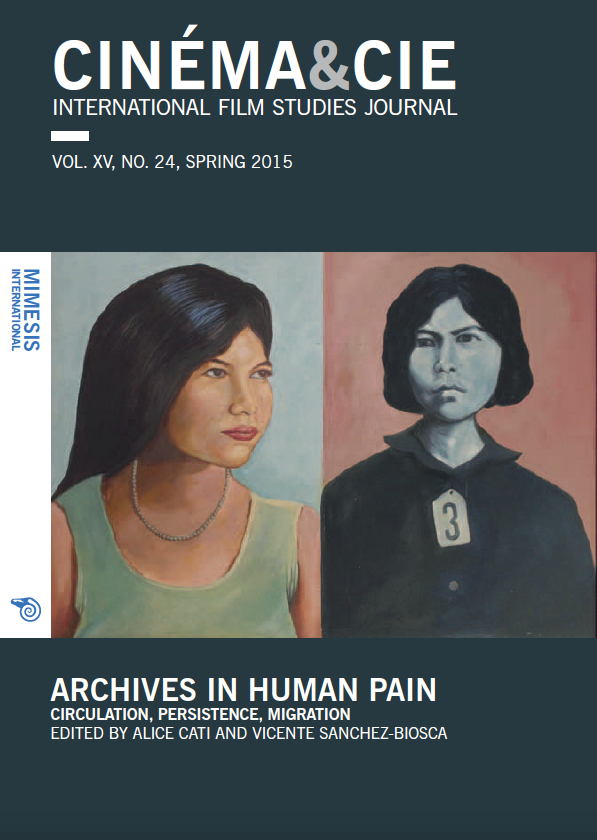
Edited by Alice Cati and Vicente Sánchez-Biosca
The images of atrocity, either analog or digital, are always the trace of an encounter between the gaze of a photographer or a cameraman and a human being suffering from the painful effects of man-made violence. The archive images resulting from such an encounter raise some inevitable questions: who took them and for what purpose? Is it possible to retrace the process that led to these shots? What do they hide behind what the eye can see? This special issue of Cinéma & Cie will not only focus on the production of such images, but also on their persistence on the synchronic level (in the media: newspapers, magazines, cinema, television, the Internet, museums…) as well as on the diachronic level (across time: mutation, re-editing, inversion…). From propaganda to counter-propaganda, from purposes of memory to artistic aims, the circulation of these images proves that repetition always implies difference.
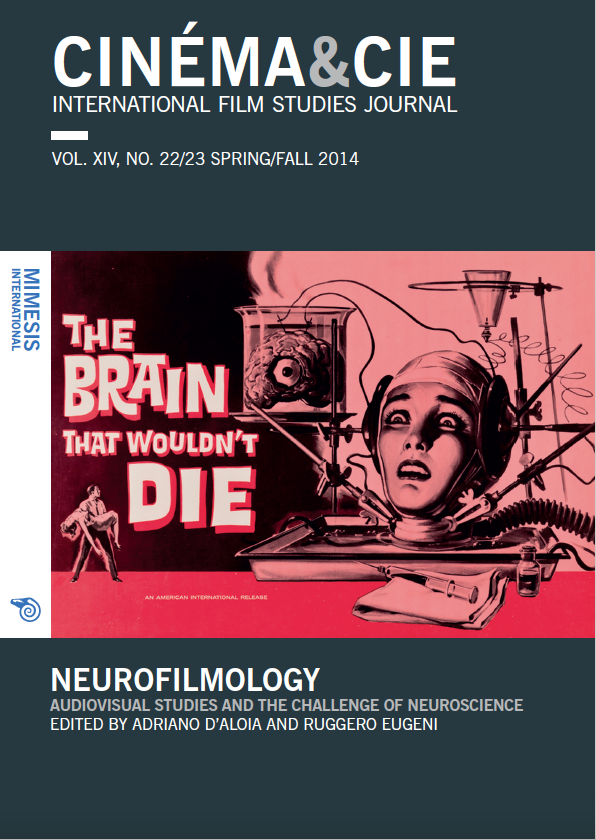
Edited by Adriano D'Aloia and Ruggero Eugeni
Over the last two decades, discoveries made in the field of cognitive neuroscience have begun to permeate the humanities and social sciences. In the context of this intersection, Neurofilmology is a research program that arises at the encounter between two models of viewer: the viewer-as-mind (deriving from a cognitive/analytical approach) and the viewer-as-body (typical of the phenomenological/continental approach). Accordingly, Neurofilmology focuses on the viewer-as-organism, by investigating with both empirical and speculative epistemological tools the subject of audiovisual experience, postulated as embodied, embedded, enacted, extended, emerging, affective, and relational.
This special issue of Cinéma & Cie focuses on major conceptual and epistemological arguments arising from the dialogue between audiovisual studies and neurosciences developed over the last twenty years. In fact, the contributors share the conviction that such a dialogue can be fruitful if and only if it is conducted within a common and consistent framework, including both epistemological and conceptual aspects. Such a framework should allow each of the research programs to contribute to a shared understanding of that particular and complex phenomenon that is the film and audiovisual media viewing experience.

Edited by André Gaudreault and Laurent Le Forestier

Edited by Tim Bergfelder

Edited by Alice Autelitano and Veronica Innocenti

Edited by Valentina Re

Edited by Pierre Chemartin and Stefania Giovenco

Edited by Philippe Dubois

Edited by Philippe Dubois

Edited by Nicolas Dulac and Bernard Perron

Edited by Philippe Dubois
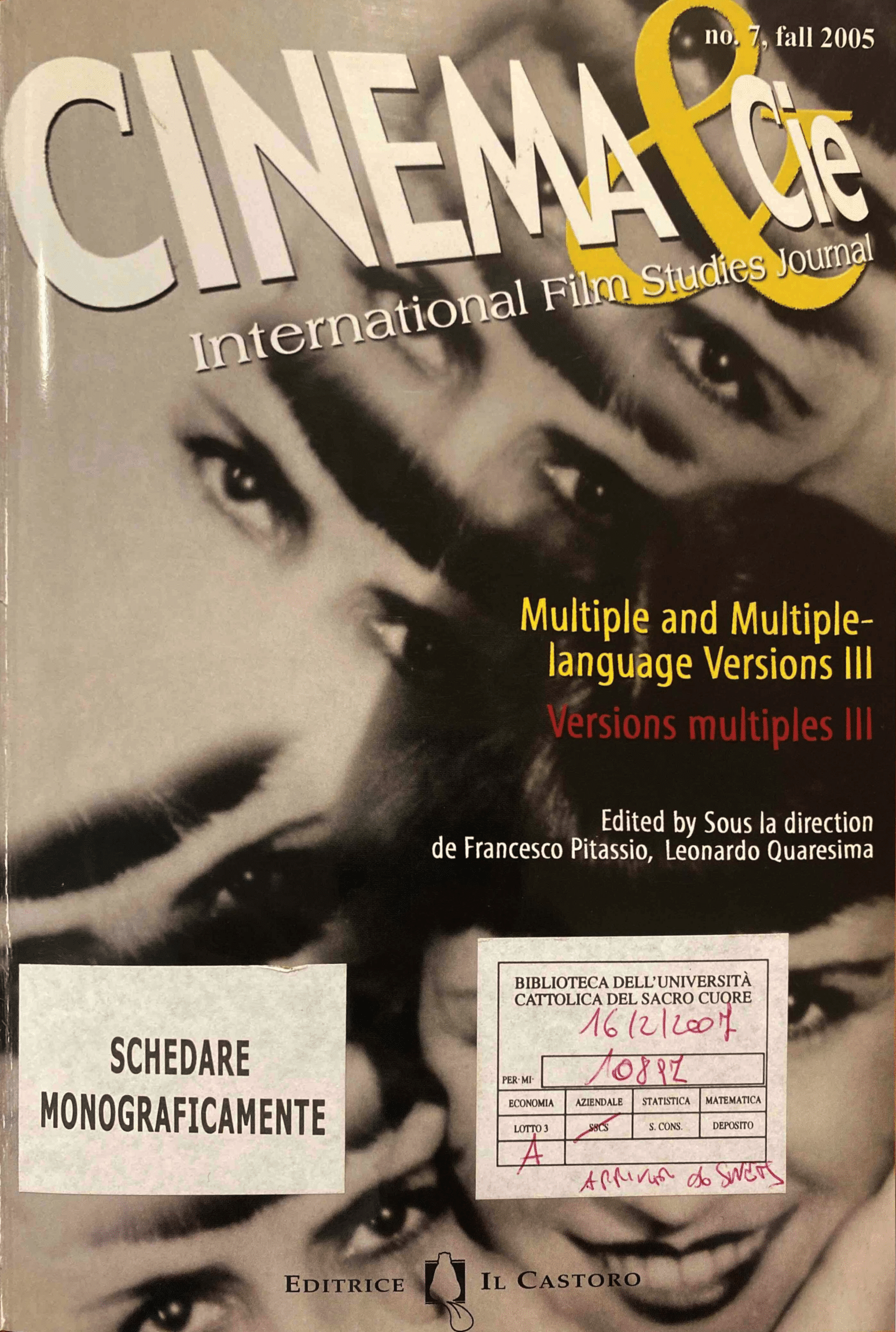
Edited by Francesco Pitassio and Leonardo Quaresima

Edited by Simone Venturini and Hans-Michael Bock

Edited by Nataša Ďurovičová
Call for Essays for the thematic section of Cinéma & Cie no. 44, edited by Daniele Rugo and Marco Benoît Carbone.
Call for Essays for the thematic section of Cinéma & Cie no. 42, edited by Kathrin Fahlenbrach, Giuseppe Previtali, and Giacomo Tagliani.
Call for Essays for the thematic section of Cinéma & Cie no. 41, edited by Daniel Biltereyst, Elena Gipponi and Andrea Miconi
Cinéma & Cie. Film and Media Studies Journal
ISSN 2036-461X
This work is licensed under a Creative Commons Attribution 4.0 International License.
